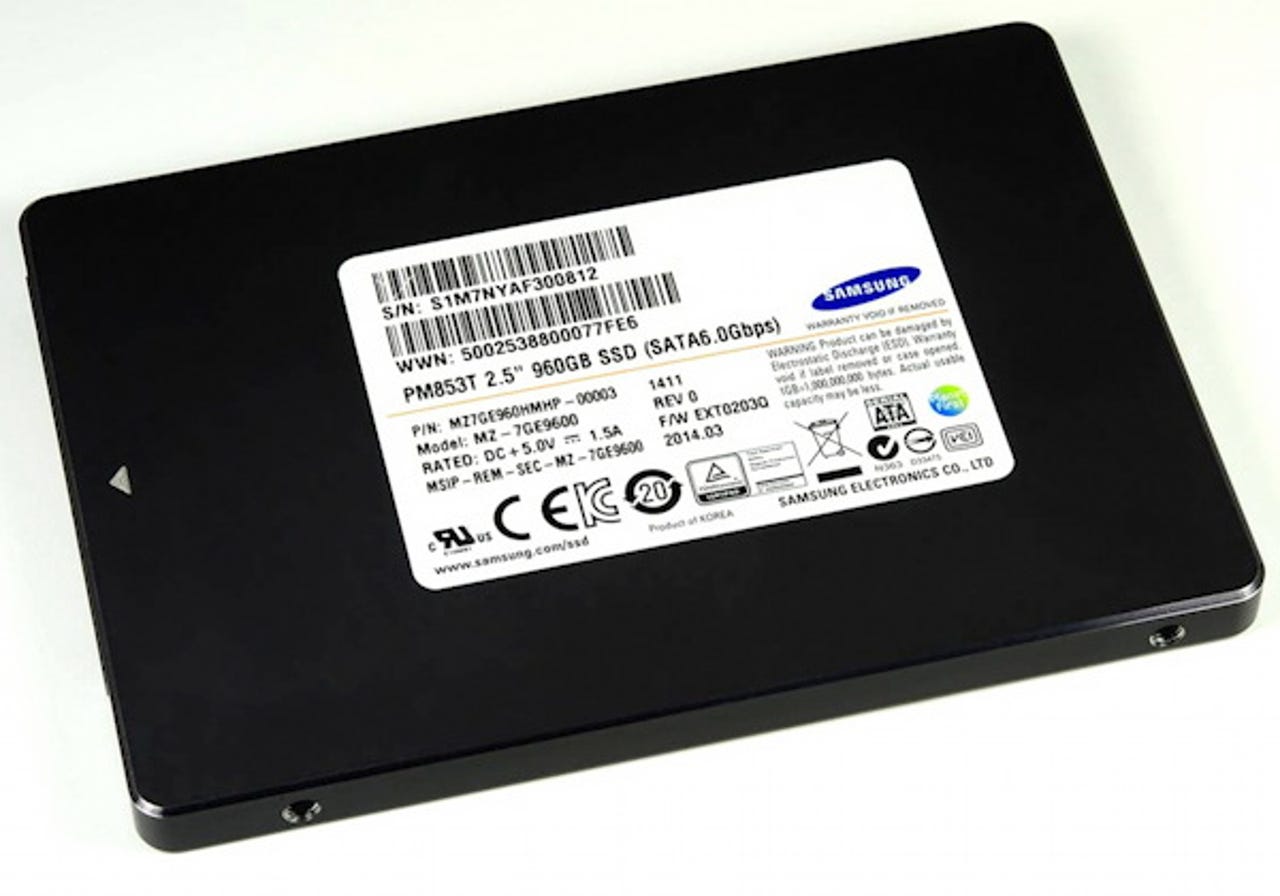Samsung builds enterprise 3-bit NAND SSD

Samsung Electronics, Co., Ltd., said today that it has begun mass producing the industry’s first high-performance, three-bit-NAND-based SSD for servers and data centers. Installations of the 3-bit MLC (multi-level-cell) NAND SSDs, initially in large-scale data centers, are expected to begin later this quarter.
The new PM853T SSD, available in 240GB, 480GB and 960GB capacities, claims high levels of random IOPS, performance and quality of service (QoS). The new drive promises a sequential read speed of 530 megabytes per second (MB/s), while writing sequentially at 420MB/s. It also will read data randomly at 90,000 IOPS and handle sustained random writes at 14,000 IOPS, through a SATA 6Gb/sec interface. Samsung expects the adoption of 3-bit SSDs in data centers to replace the 2-bit SSD market.
The big advantage of 3-bit MLC is a lower cost per bit. Samsung says the new drives deliver a 30 percent increase in manufacturing efficiency compared to SSDs that use 2-bit NAND flash components.

Samsung's first 3-bit NAND-based 840 EVO SSD, introduced in 2012, has been successful in ultra-slim notebooks and PCs. They hope to achieve a strong position in high-efficiency SSDs in large data centers.
The Storage Bits take
A 3-bit cell requires 8 levels of stored charge - electrons - per quantum well site. With small cell sizes - assume a 20nm feature size - the well can only hold ≈1,000 electrons, which means the signal processing and error correction has to be very good to reliably read data.
Featured
A related issue is write life. With an expected lifespan of ≈1,000 writes - program-erase cycles in flash lingo - a server SSD has to be seriously over-provisioned so it can replace failed blocks. That over-provisioning makes 3-bit MLC less economical than you might expect. Other techniques, such as slower writes, can dramatically improve endurance.
Samsung's announcement makes no mention of total write capacity - something Intel commonly specs - so SSD durability is an open question. Using one of these units in a continuous write application such as logging or metadata updates might be a problem.
Assuming those issues are addressed, Samsung should be able to bring down the price of server-grade SSDs even further. If it works, it will be a good deal.
Comments welcome, as always. What's your experience with server SSDs? Update: Learn more about flash endurance improvement in this video white paper I did for LSI. End update.